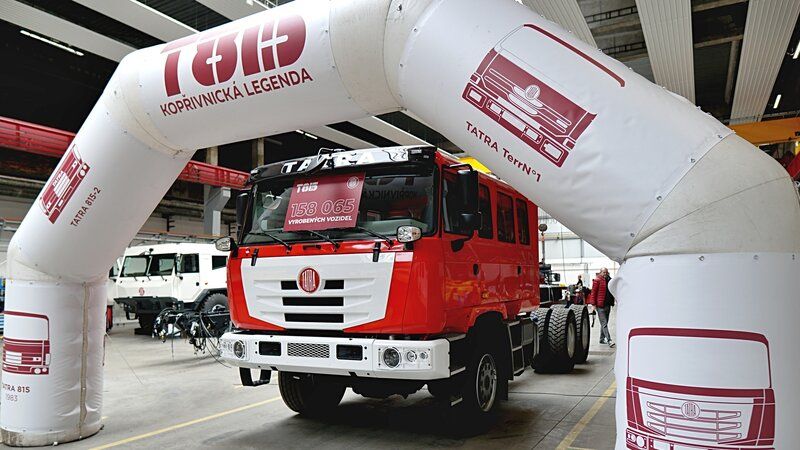Last Tata T815 Rolls off Production Line

On Tuesday, February 25, 2025, the last truck of the T 815 model series rolled off the production line of Tatra Trucks in Kopřivnice. The three-axle chassis for the CAS 30 fire truck with a long four-door cabin over engine concludes more than four decades of production of unique all-wheel drive heavy trucks.
Currently, the civilian and special program of the oldest and only Czech truck manufacturer Tatra consists of vehicles of two modern model series: Force and Phoenix. Within both, the company launched the third generation of heavy trucks last year. The Force and Phoenix model series are a perfect reflection of the best in engineering and technology that the long-term development of the T 815 has offered. The so-called chassis "Tatra concepts", air-cooled T3 family engines, of our own design and production, V8 and V12, now also with electronic RE injection, up to fourteen-speed transmission aggregate of our own production with electronic F shift shifting system, additional/downshift gearboxes of various types with different gears, pneumatic suspension system, combined suspension system KING FRAME, disc brake system and other solutions are the legacy of the T 815 for a successful future. If it were not for the brilliantly founded T 815 project (Ing. Milan Galia, 1930 - 2017), there would be no Force and Phoenix model series today and perhaps there would be no Tatra anymore.
A strong and complex story
The T 815 project, which closed this year, is full of interesting facts and even unexpected decisions. Just its designation with the type number "eight" at the beginning. Originally, the socialist nomenclature allocated the number eight for military projects. And so, it is. T 815 was originally a project to modernize the primarily military T 813, or T2-813 how it was known. Civilian production was to be represented by the new type T 157 as a strictly agricultural vehicle. But what the hell, the party and the government decided to stop the agricultural project and include both civilian and military production under the single designation T 815. This ultimately led to the "revealing" findings of various, mainly external, experts in the following four decades that the T 815 was too complex and expensive to produce for civilian use. Several times during that time, some of them tried to "fix it", fortunately always unsuccessfully.
T 815 always managed to justify its justification. However, its time began to approach at the end of the first decade of the twenty-first century. In connection with the low annual production figures and relatively expensive in-house production, there was really high pressure from lending banks to substantially restructure Tatra's production program. Simply put, it was about getting rid of the development and production of its own pressed and welded cabin, air-cooled T3 engine and transmission unit.
Practically, even then, the wheel platform was to remain, which was to provide its highest added value, the so-called Tatra-Mobility. That is, the ability to offer a full-wheel drive chassis for retrofitting in customer projects. It was also the time when today's most modern Force and Phoenix series vehicles first saw the light of day.
Nevertheless, it took another thirteen years for the T 815 to come to an end. There were and are still enough customers who would like to buy a pure cab over engine (COE) Tatra. The production costs already mentioned and, above all, modern legislative measures, safety, emissions and others, are against it. Nevertheless, the T3 Euro III, Euro V engines, without emission specifications, without electronics or with them, still have their customers, as do Tatra transmission units. Of course, the vast majority on continents other than Europe. However, it is still used by rescue and fire departments in the Czech Republic and Slovakia thanks to its ability to work with F34 fuel.